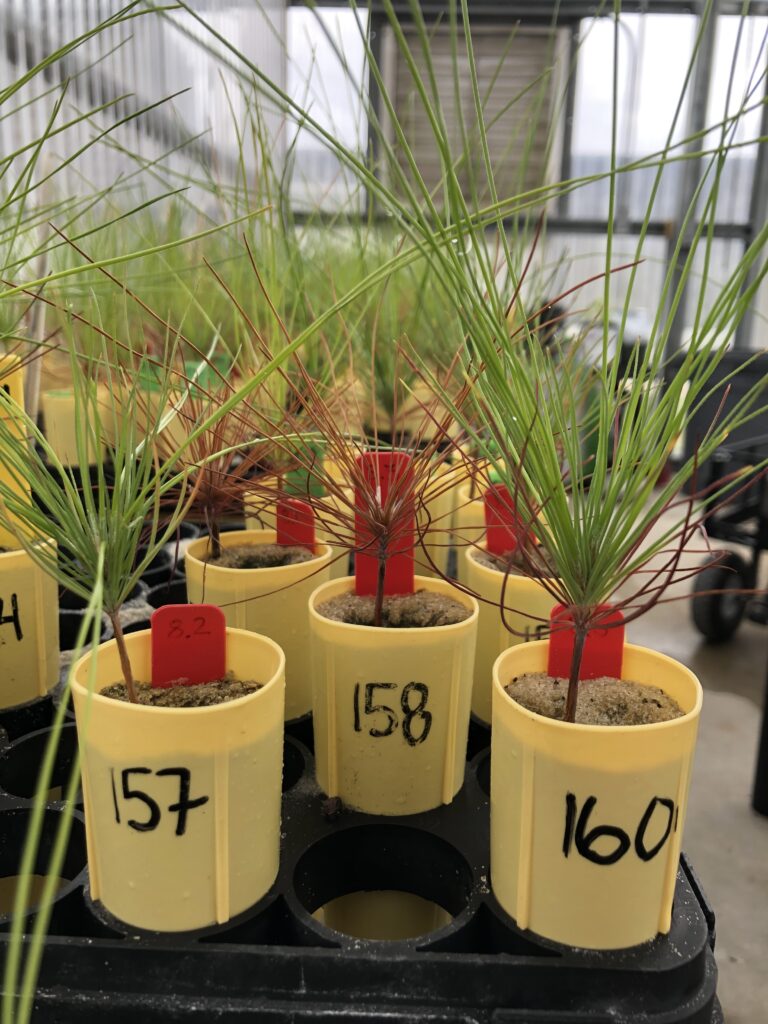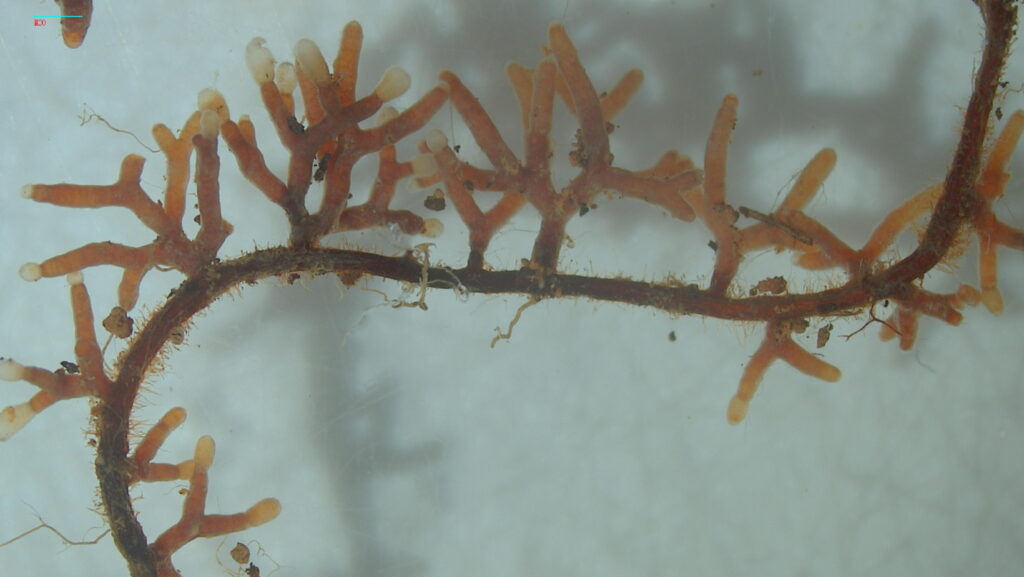By Lourdes Mederos, UF/IFAS Communications
Pine rocklands are home to plants and animals found nowhere else on earth. They are also one of the world’s most endangered habitats.
Unique to South Florida, the Florida Keys and some islands in The Bahamas, Turks and Caicos, these upland islands of limestone forest perched just a few feet above sea level are getting hit from all sides, including rising temperatures, worsening storms and droughts.
A new University of Florida study in Molecular Ecology reveals that rising sea levels and salt intrusion are negatively impacting the symbiotic fungi associated with the pines in this critically endangered habitat. High salt levels are detrimental to some species of fungi, including those that form critical symbiotic associations with pines. The destruction of these essential underground fungi is putting an already endangered South Florida ecosystem at greater risk.

In order to figure out how to preserve this ecosystem amid issues like salt intrusion from sea level rise, researchers dove deep – literally – to see how beneficial fungi could make or break tree and plants’ survival.
“Seedling survival and recruitment is critical for forests to regenerate and survive, but for certain areas in the pine rocklands, like the Florida Keys, seedling recruitment is really low,” said Elena Karlsen-Ayala, author and a former doctoral student at UF’s Institute of Food and Agricultural Sciences’ (UF/IFAS ) Tropical Research and Education Center.
For any species to persist in an environment, it must replace itself generation after generation, she said. Seedling recruitment includes seed germination, seedling survivorship and seedling growth which are essential for forest regeneration.
“We were curious about what is happening below ground that might explain some of these patterns,” Karlsen-Ayala said.
Some trees, like the Florida slash pines, form a symbiotic relationship with fungi in the soil, called mycorrhizas. The hidden network of microscopic fungi wrap around living tree roots and help them absorb nutrients and water, especially under stressful conditions like drought or high salinity.
However, these trees are struggling to survive as salt seeps into their roots, damaging the fungi, which transport nutrients. Researchers found that these fungi help the trees grow in tough soils.
Although these mycorrhizal fungi are crucial for the survival and growth of trees like the slash pines, they remain a mystery to scientists and are understudied in this ecosystem. The impacts of the increasing salt on these fungi are not well understood – until now.
“Our study is one of the first to combine surveys of mature trees with manipulative experiments on seedlings, providing a framework for future research in low-elevation coastal areas that contain mycorrhizal forest trees, and helping to identify conservation priority areas,” said Romina Gazis, one of the authors and associate professor of plant pathology at UF/IFAS Tropical Research and Education Center.
To investigate, they collected samples from areas near the ocean and farther inland for comparison. They sampled soil and tree roots across eight pine rocklands sites, extending from Miami to Big Pine Key. These sites are along a natural salinity gradient, ranging from fresher uplands in the north to saltier areas in the south. Additionally, the researchers conducted greenhouse experiments by growing pine seedlings in soils with varying salt levels to observe how the fungi responded. By extracting and sequencing fungal DNA, they could identify these microscopic fungi on roots and in soil to the species level. Then, they tallied the results to determine which fungi occur where.
“Since this study was foundational work for the pine rocklands and other low elevation coastal areas, we wanted to have robust sampling efforts,” said Karlsen-Ayala. “We surveyed 80 mature pine trees from eight sites for the first part of the study and then our salinity experiment had 575 seedlings. Overall, our results found 1,760 species of fungi, and 180 of those were ectomycorrhizal fungi associated with pine roots or soil.”

Salinity was the strongest factor shaping fungal diversity. Higher salt levels consistently meant fewer species of beneficial fungi, indicating that many species could not tolerate the high salinity. Elevation, even just a few feet, also played a key role, likely because it affects how much saltwater reaches the soil, the researchers found.
Even in a landscape with just one dominant tree species, fungal diversity varied greatly.
“Pines are the keystone species in this unique ecosystem – but they depend on mycorrhizal fungi to grow. The pines are colonized by a diverse community of fungi, but we discovered that many of them are sensitive to salt, said Matthew Smith, one of the authors and professor of plant pathology at University of Florida. “This work can help us identify the fungi that might be tolerant to salt and best for restoration efforts. We need to understand more about these fungi to really understand this imperiled ecosystem.”
By identifying areas with high salinity levels or low diversity and abundance of these fungi, scientists can map vulnerable regions and prioritize them for conservation. Understanding which fungi most benefit pines in terms of facilitating their establishment and persistence will guide restoration efforts by pairing seedlings with fungi better suited to tomorrow’s harsher conditions.
“It’s not just about planting a bunch of trees and hoping for the best,” said Karlsen-Ayala. “Future restoration efforts really need to put fungi into the equation, and to consider how beneficial fungi that are best suited to tolerate these salty areas can help with restoration efforts.”
This piece was originally published at https://blogs.ifas.ufl.edu/news/2025/04/17/uf-ifas-scientists-discover-sea-level-rise-threat-to-floridas-endangered-pine-rocklands/. Banner photo: Larry and Penny Thompson Memorial Park and Campground, in Miami, an example of a pine rockland habitat and one of the sampling sites in this study. South Florida slash pine are the keystone trees in this habitat (Photo Credit: Elena Karlsen-Ayala).
Sign up for The Invading Sea newsletter by visiting here. To support The Invading Sea, click here to make a donation. If you are interested in submitting an opinion piece to The Invading Sea, email Editor Nathan Crabbe at nc*****@*au.edu.



